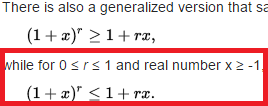Here's some hints/sketch.
Note (why?) that we really just need to prove the claim for proper fractions, i.e. numbers of the form p/q, where p, q are positive integers and p < q (so fractions less than 1). The general case will follow easily from this.
So, let p, q be positive integers with p < q. To find the decimal representation of p/q, recall that we can do this by long division by dividing q into p. What we do is divide q into the number "p.00000...". (E.g. If we were doing 3/7, we'd divide 7 into 3.0000... when doing the long division algorithm.)
Each time we divide q into a number from this process, we write the quotient above the p.0000..., and the remainder goes next to the next 0, etc. (Usual long division process from primary school.)
Now, note that as we go through this process, if we ever get to a stage where the remainder is the same as a previous remainder, the decimal representation will then start repeating the cycle from what happened at the last time we got that remainder (why?).
But such a second occurrence of a previous remainder is guaranteed to occur (why?)! And so p/q will have a repeating decimal representation.
(Where the "repeat" here really includes finite decimal representations, which means we got a remainder of 0 at one stage, and the decimal representation is finite, e.g. 0.25 (which would "repeat" as 0.25000...). Of course if writing up a formal proof we'd write things more carefully, but these were just rough hints/sketch, so we don't need to worry about that here.)
-3\cdot 5^{n+1})


